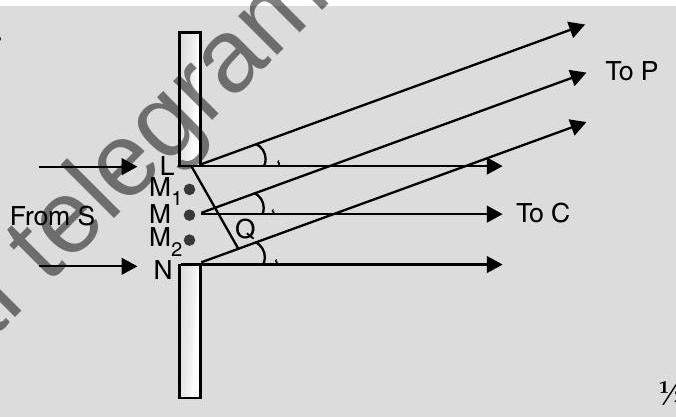wave-optics Question 21
Question: Q. 3. Write two points to distinguish between interference and diffraction fringes.
(ii) In a Young’s double slit experiment, fringes are obtained on a screen placed at a certain distance away from the slits. If the screen is moved by
U] [Comptt. 2018]
Show Answer
Solution:
Ans. (a) Two points of difference
(b) Formula
Calculation of wavelength
(a) Any two points of difference
| Interference | Diffraction |
|---|---|
| Fringes are equally spaced. |
Fringes are not equally spaced. |
| Intensity is same for all maxima. |
Intensity falls as we go to successive maxima awayfrom the centre. |
| Superposition of two waves originating from two narrow slits. |
Superposition of a con- tinuous family of waves originating from each point on a single slit. |
| Maxima along an an- gle slits separated by a distance |
Minima at an angle of width |
(b) Let
We have
Fringe width,
In the first case
In the second case
[AI Q. 4. A monochromatic light of wavelength
U] [Foreign II 2017]
Ans.

The path difference
By dividing the slit into an appropriate number of parts, we find the point
(i)
(ii)
Angular width of central maxima,
Angular width of secondary maxima
[CBSE Marking Scheme 2017]






